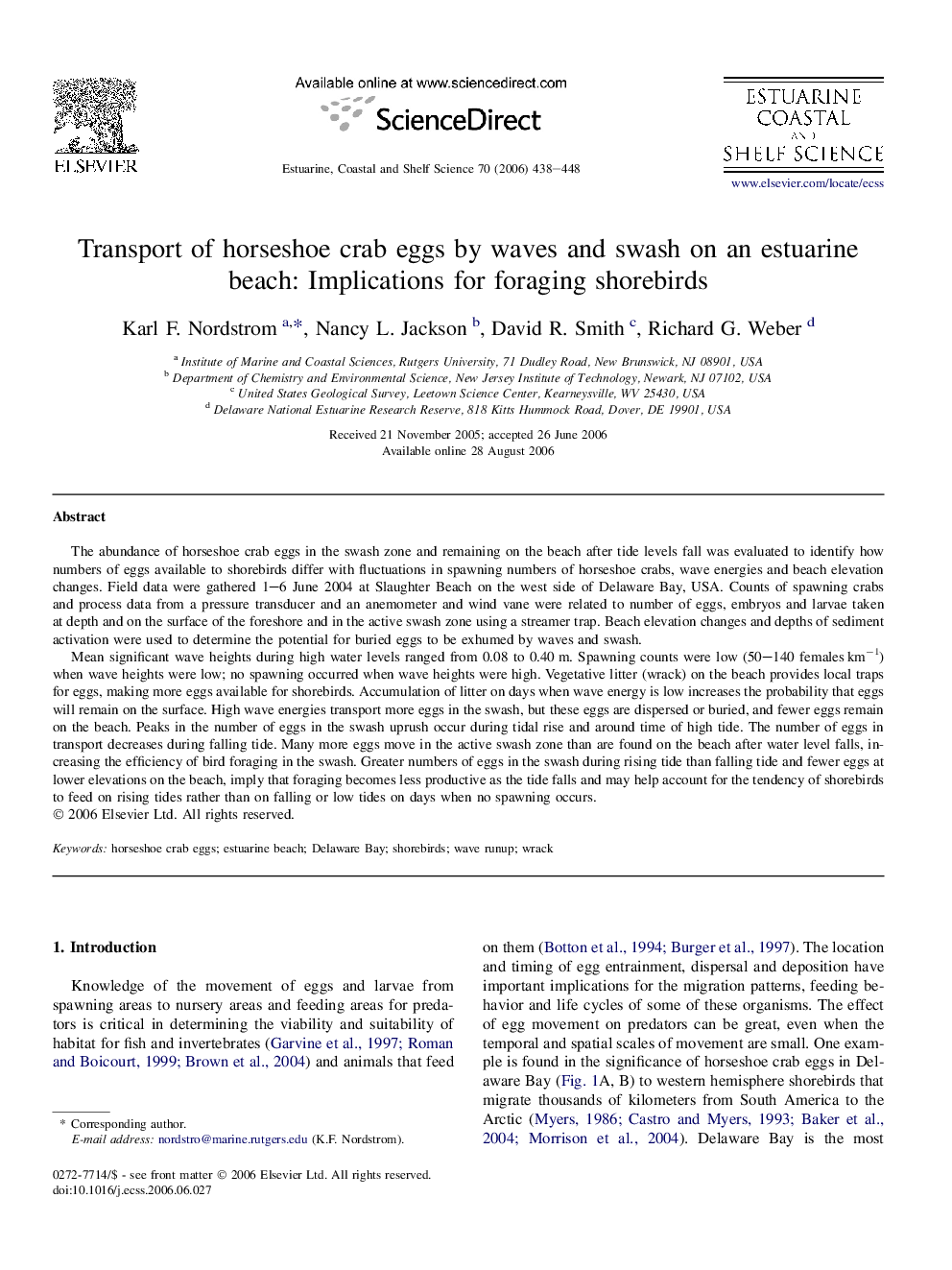| کد مقاله | کد نشریه | سال انتشار | مقاله انگلیسی | نسخه تمام متن |
|---|---|---|---|---|
| 4542182 | 1326756 | 2006 | 11 صفحه PDF | دانلود رایگان |

The abundance of horseshoe crab eggs in the swash zone and remaining on the beach after tide levels fall was evaluated to identify how numbers of eggs available to shorebirds differ with fluctuations in spawning numbers of horseshoe crabs, wave energies and beach elevation changes. Field data were gathered 1–6 June 2004 at Slaughter Beach on the west side of Delaware Bay, USA. Counts of spawning crabs and process data from a pressure transducer and an anemometer and wind vane were related to number of eggs, embryos and larvae taken at depth and on the surface of the foreshore and in the active swash zone using a streamer trap. Beach elevation changes and depths of sediment activation were used to determine the potential for buried eggs to be exhumed by waves and swash.Mean significant wave heights during high water levels ranged from 0.08 to 0.40 m. Spawning counts were low (50–140 females km−1) when wave heights were low; no spawning occurred when wave heights were high. Vegetative litter (wrack) on the beach provides local traps for eggs, making more eggs available for shorebirds. Accumulation of litter on days when wave energy is low increases the probability that eggs will remain on the surface. High wave energies transport more eggs in the swash, but these eggs are dispersed or buried, and fewer eggs remain on the beach. Peaks in the number of eggs in the swash uprush occur during tidal rise and around time of high tide. The number of eggs in transport decreases during falling tide. Many more eggs move in the active swash zone than are found on the beach after water level falls, increasing the efficiency of bird foraging in the swash. Greater numbers of eggs in the swash during rising tide than falling tide and fewer eggs at lower elevations on the beach, imply that foraging becomes less productive as the tide falls and may help account for the tendency of shorebirds to feed on rising tides rather than on falling or low tides on days when no spawning occurs.
Journal: Estuarine, Coastal and Shelf Science - Volume 70, Issue 3, November 2006, Pages 438–448